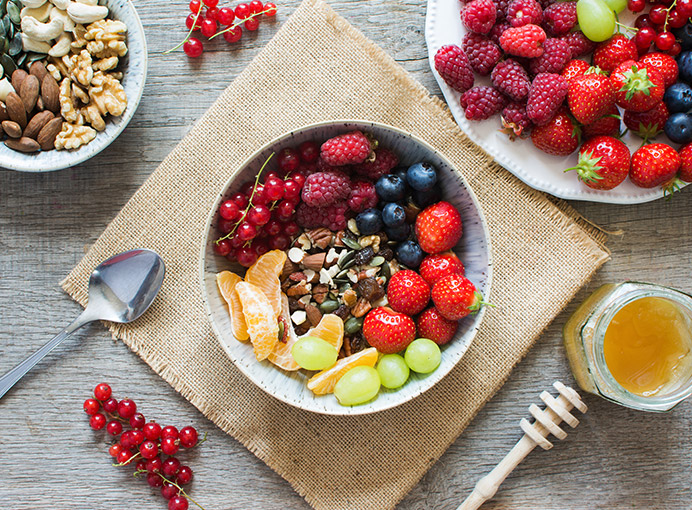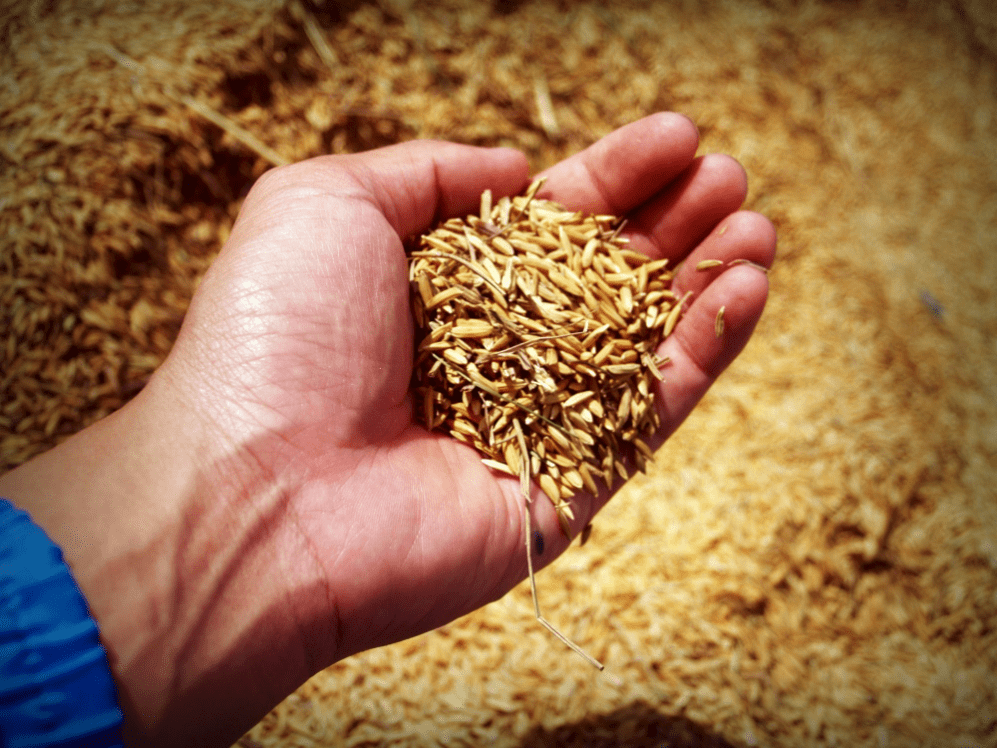Gluten-Free Foods
Cutting out gluten from your diet may seem like a difficult and limiting task. Fortunately, there are many healthy and delicious foods that are naturally gluten-free.

The most cost-effective and healthy way to follow the gluten-free diet is to seek out these naturally gluten-free food groups, which include:
- Fruits
- Vegetables
- Meat and poultry
- Fish and seafood
- Dairy
- Beans, legumes, and nuts
Pure wheat grass and barley grass are gluten-free, but there is gluten in the seeds. If they are not harvested or processed correctly, there is risk of gluten contamination.

What About Grains?
There are many naturally gluten-free grains that you can enjoy in a variety of creative ways. Many of these grains can be found in your local grocery store, but some of the lesser-known grains may only be found in specialty or health food stores. It is not recommended to purchase grains from bulk bins because of the possibility of cross-contact with gluten.
Naturally Gluten-Free Foods
The following grains, legumes, seeds, and other starchy foods are naturally gluten-free:
- Amaranth
- Arrowroot
- Beans
- Buckwheat groats (also known as kasha)
- Cassava
- Chia
- Corn
- Flax
- Gluten-free oats
- Millet
- Nut flours
- Potato
- Quinoa
- Rice
- Sorghum
- Soy
- Tapioca
- Teff
- Yucca
There is some research indicating that some naturally gluten-free grains may contain gluten from cross-contact with gluten-containing grains through harvesting and processing. If you are concerned about the safety of a grain, purchase only versions that are tested for the presence of gluten and contain less than 20 parts per million.
Gluten-Free Substitutes
Many items that usually contain gluten have gluten-free alternatives that are widely available in most grocery stores, making adherence to the gluten-free diet much easier. Keep in mind, however, that minimally processed fresh foods are a crucial part of a healthy gluten-free diet. It is very important to base your diet around fruits, vegetables, meats, and other healthy food groups listed above.
Many commercially-available products are labeled “gluten-free,” but there will be some that are not; this is why proper label reading is important. It is also important to remember that “wheat-free” does not necessarily mean “gluten-free.” Be wary, as many products may appear to be gluten-free, but are not.
As a rule, traditional wheat products such as pastas, breads, crackers, and other baked goods are not gluten-free. However, there are many gluten-free options available that use alternative flours and grains. Often, gluten-free bread can be found in the freezer section. Additionally, there are gluten-free flours and flour blends available, allowing you to bake your own bread.
Cereal
Many cereals contain gluten or wheat-based ingredients, but there are some that do not. Be on the lookout for the “gluten-free” label, but also realize that not all gluten-free cereals will advertise as such, so it is important to check the list of ingredients. Something to watch out for: cornflakes and puffed rice cereal may contain malt flavoring or extract, which contains gluten.
Oats
Oats are often harvested and processed with the same equipment that is used for wheat, and are therefore easily contaminated. Research indicates that pure, uncontaminated oats consumed in moderation (up to ½ cup dry rolled oats daily) are tolerated by most people with celiac disease. Some people with celiac disease have an immune reaction to the avenin in oats, a protein similar to gluten, and should avoid all oats, even those labeled gluten-free. If you can tolerate oats, be sure they are specifically labeled gluten-free, including granolas and granola bars.
Soups and Sauces
Soups and sauces are one of the biggest sources of hidden gluten, as many companies use wheat as a thickener. It is always a good idea to read the label of any pre-prepared or canned soup and sauce, paying special attention to those that are cream-based.
Produce
Fresh and frozen fruits and vegetables are naturally gluten-free. However, it is important to read labels on any processed fruits and veggies, as well as dried fruit and pre-prepared smoothies. Additionally, packaged frozen potatoes are not always gluten-free, and labels should be read carefully when considering these products.

Beverages
Most beverages are gluten-free, including juices, sodas, and sports drinks.
Wine is generally considered gluten-free to the FDA standard of less than 20 parts per million of gluten. According to the University of Chicago Celiac Disease Center, wines fermented in barrels lined with wheat paste (historically wines such as port, Madeira and muscatel) are unlikely to contain enough gluten to cause a reaction.
However, some types of wine, like those with added color or flavoring, such as dessert wines, as well as those made from barley malt, such as bottled wine coolers, do contain an unsafe amount of gluten for people with celiac disease. For these, consumers should check the label, and if in doubt, contact the company.
Alcoholic beverages, including hard liquor/distilled liquors/hard ciders are also gluten-free. Beers, ales, lagers, malt beverages, and malt vinegars that are made from gluten-containing grains are not distilled and therefore are not gluten-free. There are several brands of gluten-free beers available in the United States and abroad.